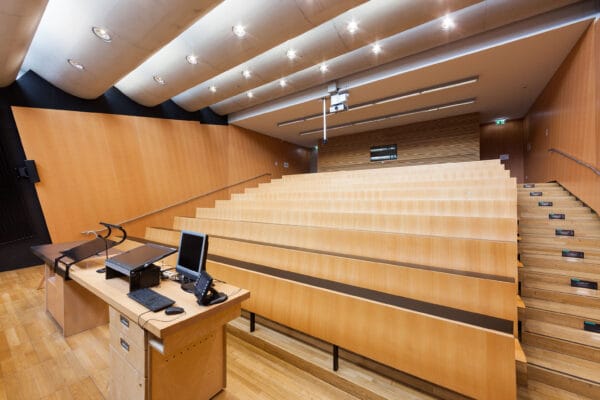
NAME:
SOWI - HS 2
BUILDING:
SOWI
FLOOR:
0
TYPE:
Lecture Hall
CAPACITY:
80
ACCESS:
Only Participants
EQUIPMENT:
Beamer, PC, WLAN (Eduroam), Overhead, Flipchart, Blackboard, Sound System, Handicapped Accessible, Light Installation
Mountain glaciers are vital components of the global climate system, playing a crucial role in regional hydrology, energy balance, and atmospheric dynamics. These systems are highly sensitive to climate change, and small-scale processes, such as localized thermodynamic adjustments, can trigger rapid feedback mechanisms that significantly alter large-scale atmospheric conditions. Observing and directly interpreting these adjustments is challenging due to nonlinear and often obscured cause-and-effect relationships mediated by intermediary steps. This complexity limits the predictability of meteorological and cryospheric phenomena in mountainous regions. Addressing these challenges requires a holistic analysis approach, without relying on assumptions of linearity or simple correlations. To overcome these obstacles, we employ high-resolution numerical atmospheric simulations to study interactions between glacier microclimates and the free atmosphere, as well as the feedback effects that emerge across scales. Using transfer entropy, we uncover the causal relationships driving these feedbacks, identify directional influences between mass and energy fluxes, and analyze how localized processes propagate across micro-, meso-, and synoptic scales. For example, our analysis reveals how changing glacier geometries affect the microclimates and regional energy balances, driving mesoscale atmospheric circulation patterns. This presentation highlights key insights from these simulations, particularly on the role of glacier-atmosphere interactions in shaping elevation-dependent warming and energy flux dynamics.

We and use cookies and other tracking technologies to improve your experience on our website. We may store and/or access information on a device and process personal data, such as your IP address and browsing data, for personalised advertising and content, advertising and content measurement, audience research and services development. Additionally, we may utilize precise geolocation data and identification through device scanning.
Please note that your consent will be valid across all our subdomains. You can change or withdraw your consent at any time by clicking the “Consent Preferences” button at the bottom of your screen. We respect your choices and are committed to providing you with a transparent and secure browsing experience.